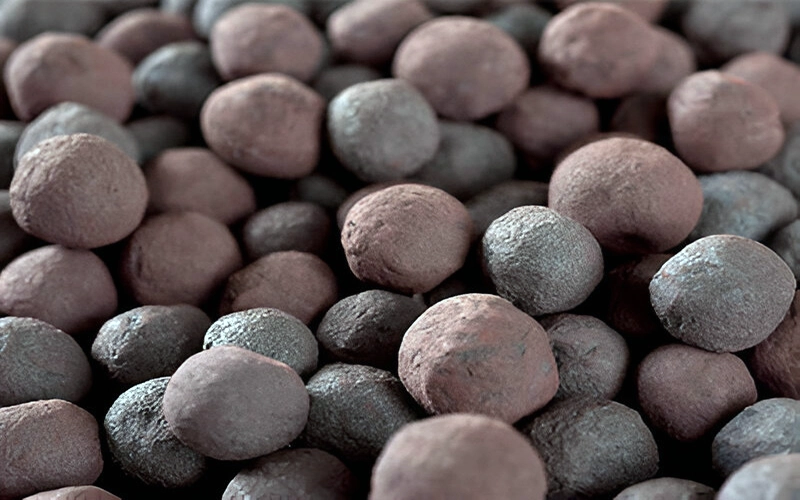Iron ore is a naturally occurring mineral from which metallic iron is extracted. It is the primary raw material used in the production of steel, which is essential for construction, transportation, manufacturing, and many other industries. Iron ores are typically rich in iron oxides and vary in color from dark grey to rusty red. The most commonly mined iron ore types include hematite (Fe₂O₃) and magnetite (Fe₃O₄), with others like goethite, limonite, and siderite also contributing to global iron production.
Magnetite is one of the most significant types of iron ore due to its high iron content, usually around 72% when pure, making it more efficient and desirable for steel production. It is a black, magnetic mineral and one of the few naturally occurring materials that exhibit strong magnetism. Magnetite is commonly found in igneous and metamorphic rocks and is often mined through both open-pit and underground methods.
One of the major advantages of magnetite over other iron ores like hematite is its magnetic property, which allows for easier beneficiation. Through magnetic separation, impurities can be removed efficiently, resulting in a high-grade concentrate. This process often yields a product suitable for direct reduction or pelletizing, both crucial in modern steelmaking.
Globally, Australia, Brazil, China, and Russia are the leading producers of iron ore. In particular, Australia and Brazil dominate the export market, while China is the largest consumer, driven by its vast steel industry. Magnetite is extensively mined in regions such as Western Australia, Chile, and northern Sweden, where large, high-grade deposits have been discovered and developed.

Iron ore is a critical material in industrial development. Beyond steelmaking, iron compounds derived from ore are used in pigments, water treatment, and as catalysts in chemical processes. However, the mining and processing of iron ore raise environmental concerns, including land degradation, water use, and carbon emissions from smelting.
Efforts are underway to reduce the environmental impact of iron ore processing by developing greener technologies, such as hydrogen-based direct reduced iron (DRI) production, especially when using magnetite concentrates.
In summary, iron ore—especially magnetite—plays a vital role in modern industry. Its high iron content, ease of beneficiation, and importance in steel production make it one of the most valuable and heavily traded mineral commodities worldwide.
Iron is the world’s most commonly used metal – steel, of which iron ore is the key ingredient, representing almost 95% of all metal used per year. It is used primarily in structural engineering applications and in maritime purposes, automobiles, and general industrial applications

| Element | Fe | SiO2 | Al2O3 | P | S | FeO | Moisture | Size | Origin |
|---|---|---|---|---|---|---|---|---|---|
| Percent | 60% min | 13% max | 3% max | 0.1% max | 0.1% max | 13% min | 2% max | 0 – 10 mm (90%) | Iran |
| Element | Fe | SiO2 | Al2O3 | P | S | FeO | Moisture | Size | Origin |
|---|---|---|---|---|---|---|---|---|---|
| Percent | 60% min | 8% max | 3% max | 0.1% max | 0.1% max | 14% min | 3% max | 0 – 10 mm (90%) | Iran |